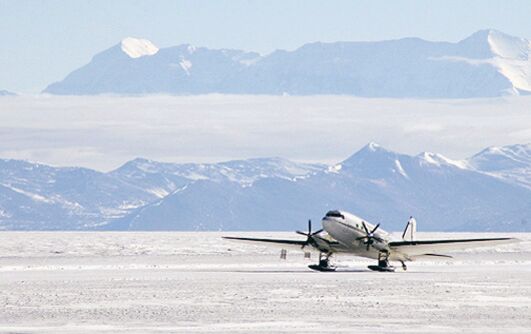
The BT-67 is no stranger to Antarctica's harsh climate. This picture displays a Basler BT-67 (re-engined DC-3) in polar configuration equipped with snow skids. (Basler)
The US Department of State has approved Argentina's request to purchase Basler BT-67s, support equipment, and training for up to USD143 million, the department announced on 18 April.
“The proposed sale will … [provide] additional capacity for airdrop and airlift operations to service Antarctica during the winter season,” the announcement read. “This will reduce the burden on other airlift assets in Argentina.”
The number of aircraft to be purchased is unknown, but the deal includes spare engines, ground handling equipment, transport, and personnel training. Basler and the Argentine Ministry of Defense had not responded to Janes questions at the time of publication.
Argentina maintains nearly a dozen research bases on Antarctica, according to the country's Ministry of Foreign Affairs, International Trade and Worship. Argentina's air force operates several aircraft types capable of operating in Antarctica, including four Lockheed Martin C-130Hs and seven de Havilland DHC-6s.
The BT-67 is a modified Douglas DC-3. Although DC-3 production ended in 1945, the aircraft's ubiquity – more than 13,000 were built – performance, and reputation for resilience means that some still fly operationally. Many serving with armed forces have been modified by Basler Turbo Conversions, a Wisconsin-based company, to become BT-67s, which first flew in 1989.
The BT-67 conversion swaps the DC-3's radial engines for Pratt & Whitney 1,062 kW (1,424 shp) PT6A-67R turboprop engines, lengthens the fuselage just over 1 m, and adds new fuel tanks and a new avionics system, among other tweaks. The aircraft can fly with skids, enabling it to operate from ice and snow-based runways.
For more information, please see
Looking to read the full article?
Gain unlimited access to Janes news and more...







